
Gongsanseong (공산성) does not rank high on the 'most seen by foreigners' list. Then again, neither does the city of Gongju. Naturally, the Lady in Red and I had to check it out.
Originally called Ungjinseong, the mud fortress was used by King Munjuwang (reigned 475-477 A.D.) as the Baekje capital during the Baekje Dynasty. In 538 A.D., however, King Seong moved the capital to present-day Buyeo, although Gongju remained fairly important (and close to the capital) until the Baekje Dynasty collasped in 667 A.D.
The fortress was rebuilt with stones during the Joseon Dynasty, and King Injo hid here for a short time as well.

You'll pass a number of stele, or monuments, while walking towards the front gate. Most are modern-day recreations, but this one dates from 1817 to give thanks for a rebuilt bridge. After Jemincheongyo (the bridge) was washed away by Jemincheon (the creek), the town couldn't afford the rebuild. They ended up raising funds from the nearby towns of Buyeo and Yeongi, and rebuilt the bridge in August 1817.
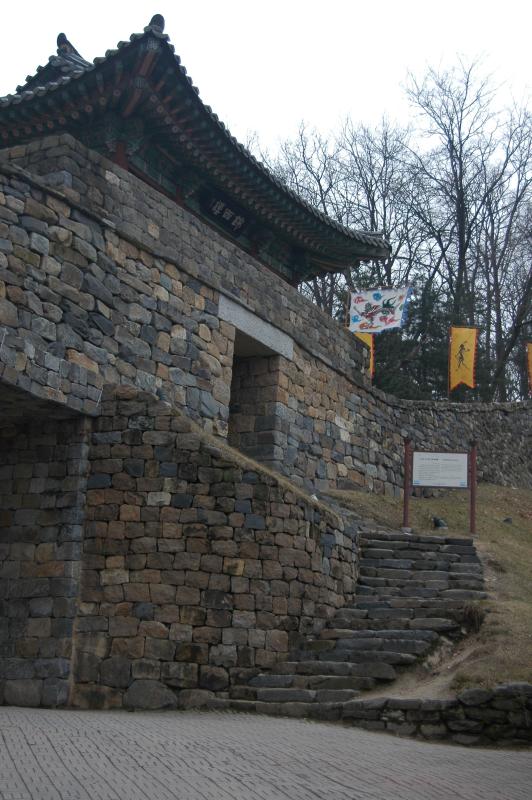
The main, tourist-friendly, entrance - Geumseoru Pavilion, or the West Gate. The original was destroyed to make way for the construction of roads, but was rebuilt in 1993.
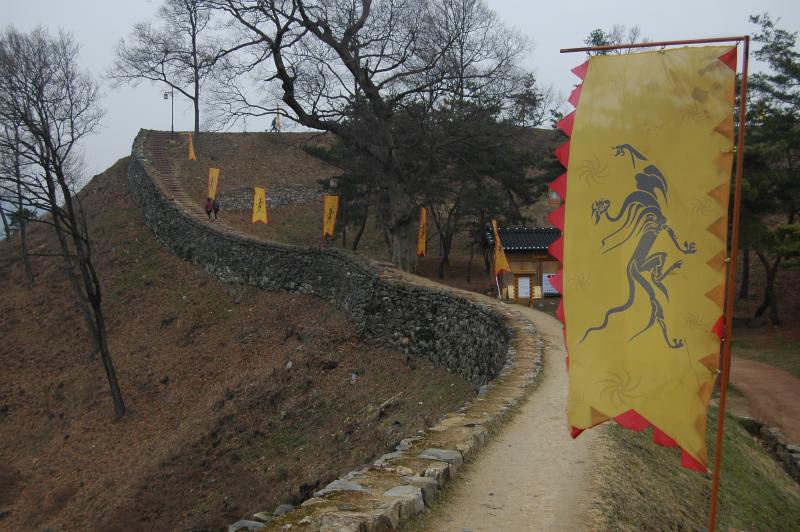
Walk along the wall of the fortress - the perimeter holds the most interesting sights, and the most recreations.
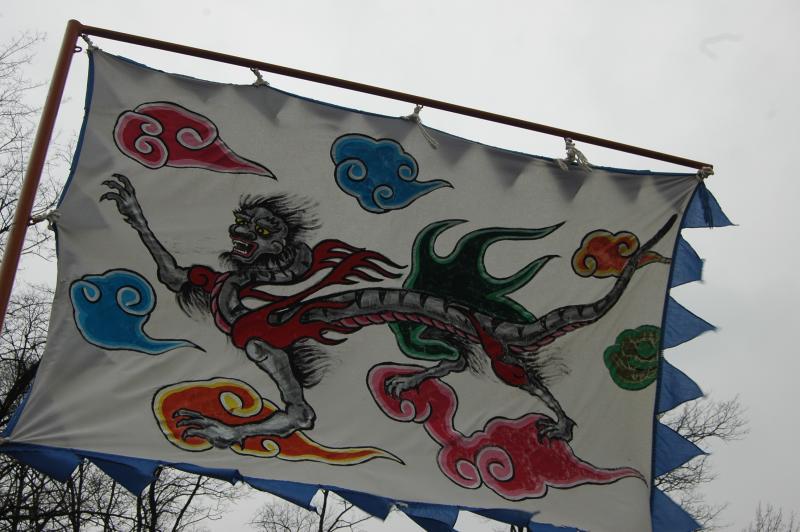
You got me here. The signs that explained the gates and pavilions didn't bother to explain the flags.
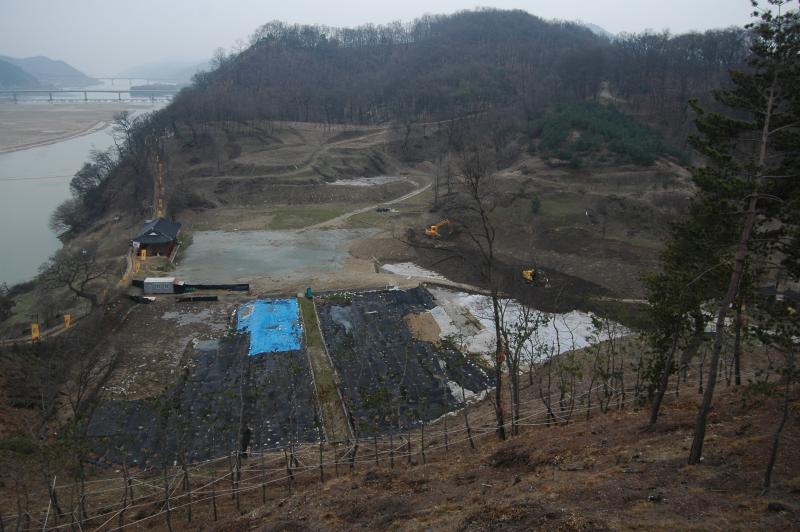
Looking into the valley protected by the fortress walls - a fairly major construction or excavation project. Not pictured are some booths still under construction - an indication that the area is getting a makeover of some kind.
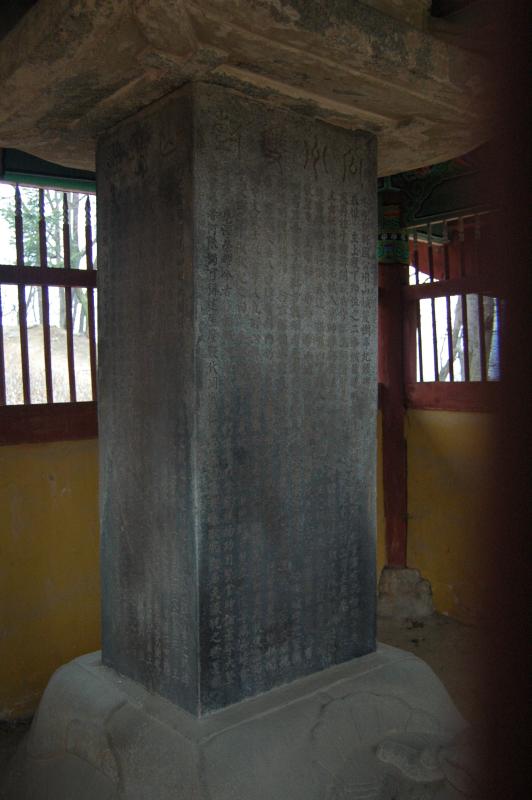
From 1708, the monument remembers how King Injo stayed at Gongsanseong to avoid the riot by Yi Gwal. In 1623, Yi Gwal was part of a coup that dethroned Gwanghaegun to make Injo king, and almost every other major leader of the coup was called to court. Yi Gwal's 'reward' was to command his troops against the Manchus coming from the North. Yi Gwal responded in 1624 by bringing over 12,000 troops back to Hanseong (present-day Seoul), forcing Injo to flee while Yi Gwal took over the city. King Injo supposedly stayed in Gongju for 6 days to wait out the fighting,

What's going on here? A field surrounded by a fence? The nearby sign reveals this to be the 'presumed site of a palace'. A leveling in the 1930's and excavations in 1985-86 uncovered many relics, including large building sites, lotus-patterned roof tiles, and holes to indicate building posts. In other words, something was here - but nothing's been reconstructed yet.

Originally built in 1734, this pavilion commemorates two trees being appointed 'high government officials'. Wait, what? When Injo fled to Gongsanseong, he waited for news under two trees; after the rebellion was taken care of, he gave the two trees their new appointment and ordered the fortress to be called Ssangsuseong. Why? He's the King - who needs a reason? The pavilion was built where those two trees once stood.

Following the perimeter of the fortress around to the South Gate, or Jinnamru. Not pictured is the very modern view of Gongju you'll get looking from the fortress towards the horizon.
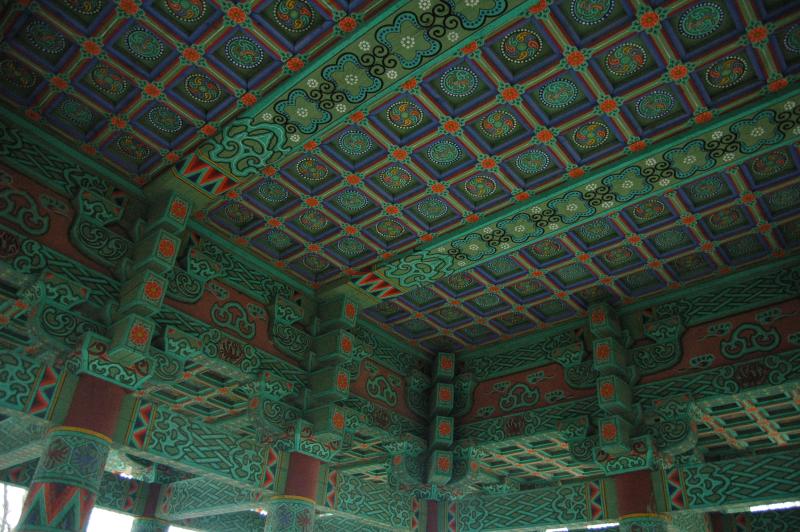
One highlight of the fortress - Imnyugak Pavilion. Originally built in 500 A.D., it was supposedly used as a reception hall for the king and his subjects. The replica, created in 1993, is simply huge - and nicely painted. Each of the two floors could easily hold dozens of people.
Winding out the sights is Yeongeunsa, a temple originally built in 1458. The temple's claim to fame? The lecture hall was used as living space for monks fighting during the 1592 Japanese invasion. A temple probably existed before that, since six Buddha statues were found from the United Silla period (668 - 935 A.D.), but there's no information on where they're displayed today.
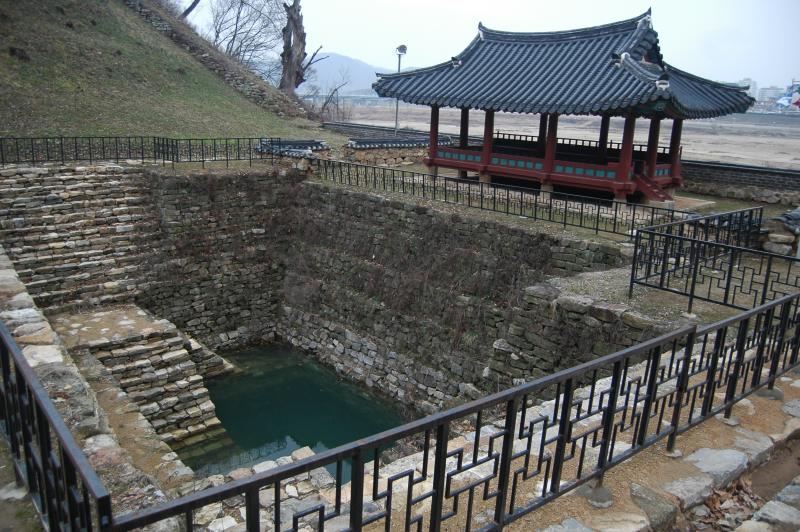
A Lotus Pond, or yeonji, near the aforementioned temple - located right next to the Geumgang river. It was excavated and restored from 1982-83, and features an interesting color of water.
The fortress is quite interesting, easy to get around, and offers plenty of English-language signs. The area is still being improved, possibly part of a drive to increase tourism, so don't be too surprised if you see a few new buildings. Although the views of the city take away from the natural scenery, it's just as easy to look inward towards what's been preserved. By itself, it's worth a day trip to Gongju - just don't expect to see many other foreigners while there.
Ratings (out of 5 taeguks):
Ease to arrive:

Foreigner-friendly:

Convenience facilities:

Worth the visit:

Directions to Gongsanseong (from Seoul): Get thee to the Express Bus Terminal (lines 2, 7, or 9 on the Seoul subway system). Take a bus to Gongju - it's about two hours away, so buy a snack and drink for the bus. Once you've arrived at the Gongju bus terminal, take a cheap taxi (~3,000 won) to Gongsanseong, or cross the river and walk for about 3 kilometers to the entrance. Bus 100 stops in front of the parking lot of Gongsanseong, but I have no idea where to get on from. Admission 1,200 won for adults; open 9 am - 6 pm.
 © Chris Backe - 2010
© Chris Backe - 2010This post was originally published on my blog, Chris in South Korea. If you are reading this on another website and there is no linkback or credit given, you are reading an UNAUTHORIZED FEED.



 RSS Feed
RSS Feed
Recent comments